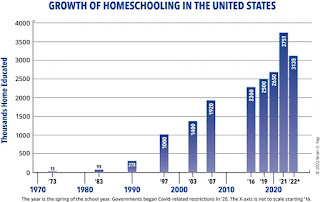Think of energy storage, and what do you think of it? Probably lithium and nickel. But what about salt and bricks? One of the big challenges for the energy transition is storage. It’s a particular problem for industrial-scale buildings and areas that need a lot of energy. Currently about half the energy demand is heat, and electric batteries are (most of the time) the ones providing it.
China’s 2023 solar exports hit a record high with over 40% growth for all equipment. The surge was dominated by modules that reached a new high of 227 GW. Meanwhile, cells had the most rapid growth at 61.6% to 38 GW.
The country consolidated its control over module supply chain manufacturing, with its share exceeding 80%. Our research reveals that Asia Pacific (excluding China) hosts most Chinese overseas facilities, totalling over 70 GW of production capacity for cell and module.
However, despite this record growth, export revenue dropped by 5.6% to US$49 billion due to a decline in prices driven by oversupply. As more markets continue to adopt local content requirements (LCRs), China will start to face increasing constraints for solar exports. In response to growing LCRs, Chinese players are globalizing manufacturing capacity to offset a loss in exports.
Europe, the US, and Southeast Asia are among the top markets for Chinese manufacturing investment. Consequently, Chinese storage investors and manufacturers have grown their overseas footprint to 22 countries.
However, due to a loose trade policy, only a maximum of 20% of the overseas capacity planned by Chinese battery manufacturers will be applied in the energy storage segment.
Environmental concerns and talent shortages are hindering the operation of overseas factories. However, despite high capex and long construction cycles, Chinese manufacturers are still investing in overseas facilities to get closer to the downstream market and expand customer relationships.
They are also attracted by government subsidies at all levels to absorb investment and create jobs, including grants, tax breaks, and low-interest loans.
Our research finds that the large regional variation in lead time is due to the dominance of Asian sources for raw materials and manufacturing equipment, as well as challenges in obtaining environmental impact assessments and permits. Likewise, obtaining safety, production and sales licenses vary across regions, as does construction efficiency, and the availability of talent to run factories.
Europe and the US are the top lithium-ion battery export markets for Chinese players. All the while, China is cooperating closely with South Korea in the battery supply chain, with considerable import and export volumes being exchanged.
Our insights reveal that Chinese manufacturers are likely to maintain their export advantage on energy storage products due to their high productivity and low costs. Elsewhere, factories outside of China still face various long construction cycles, slow production capacity ramp up, and unverified product quality.
Indeed, most overseas production capacity has been allocated to electric vehicles (EVs), limiting the local supply flowing into the energy storage sector, thus leaving a huge opportunity for China's exports.
Nevertheless, Chinese manufacturers should be cautious of persistent oversupply in the energy storage segment. In 2023, Chinese investment into battery capacity increased by nearly 30%, shifting from EVs to energy storage systems (ESS).
What’s more, China‘s planned energy storage capacity for 2030 has already far exceeded the world’s demand, exacerbating competition among Chinese manufacturers.
The problem is not so much money, but time. The hydrogen market faces a range of challenges, from policy uncertainty to lack of offtake, renewable feedstock sourcing, and supply chain challenges. However, hydrogen’s key problem in 2024 is that it’s simply too expensive to produce and transport.
Costs have risen for all renewable markets since 2020, and hydrogen is no exception. For one thing, hydrogen projects are capital intensive, and higher risk means higher than average rates for borrowing in what is already a high-rate environment. For another, the levelised cost of electricity (LCOE), a key element of the levelised cost of hydrogen (LCOH), has surged.
Policy support in the form of production-side incentives and decarbonization mandates is helping to reduce both price and offtake risk, which in turn is enabling first-mover projects to obtain debt more cheaply. However, aside from electricity costs, a series of other issues remain that continue to impact hydrogen production costs.
Currently, engineering, procurement and construction firms (EPCs) and original equipment manufacturers (OEMs) have a lack of experience of commercial-scale hydrogen projects. As a result, EPC capacity is constrained, and project cost estimates tend to be high. At the same time, economies of scale are not yet being realised.
Similarly, project developers and owners themselves often lack experience. They are therefore likely to go back to the drawing board multiple times to reduce costs and potentially change scope in what is a relatively new and unpredictable market. Meanwhile, higher contingency costs and additional supervision add to owner budgets.
In time, though, capital costs will decrease as OEMs and EPCs develop greater expertise. Standardization will reduce the amount of engineering required for each project, while OEMs will be able to increase manufacturing and diversify suppliers to reduce risk.
Where you need heat, you need a big battery. Or do you? There are plenty of options on a residential scale, but what about industrial?
In California, a company called Rondo is approaching the issue of heat delivery to commercial-scale buildings with a novel solution: they’re using bricks to store energy at half the cost of green hydrogen or chemical batteries.
Finally, another innovative way of storing energy in the form of heat comes from the Norwegian-based company Kyoto. What they call the Heatcube is a structure of vertical tanks filled with molten salt, that are charged by renewable electricity at periods of low cost. Installed at the site where heat is needed, the Heatcube stores it at 500c for use when required. An effective power-sourcing strategy will also be important, particularly in the near term, with geographies needing to play to their strengths in this respect and optimize accordingly.


